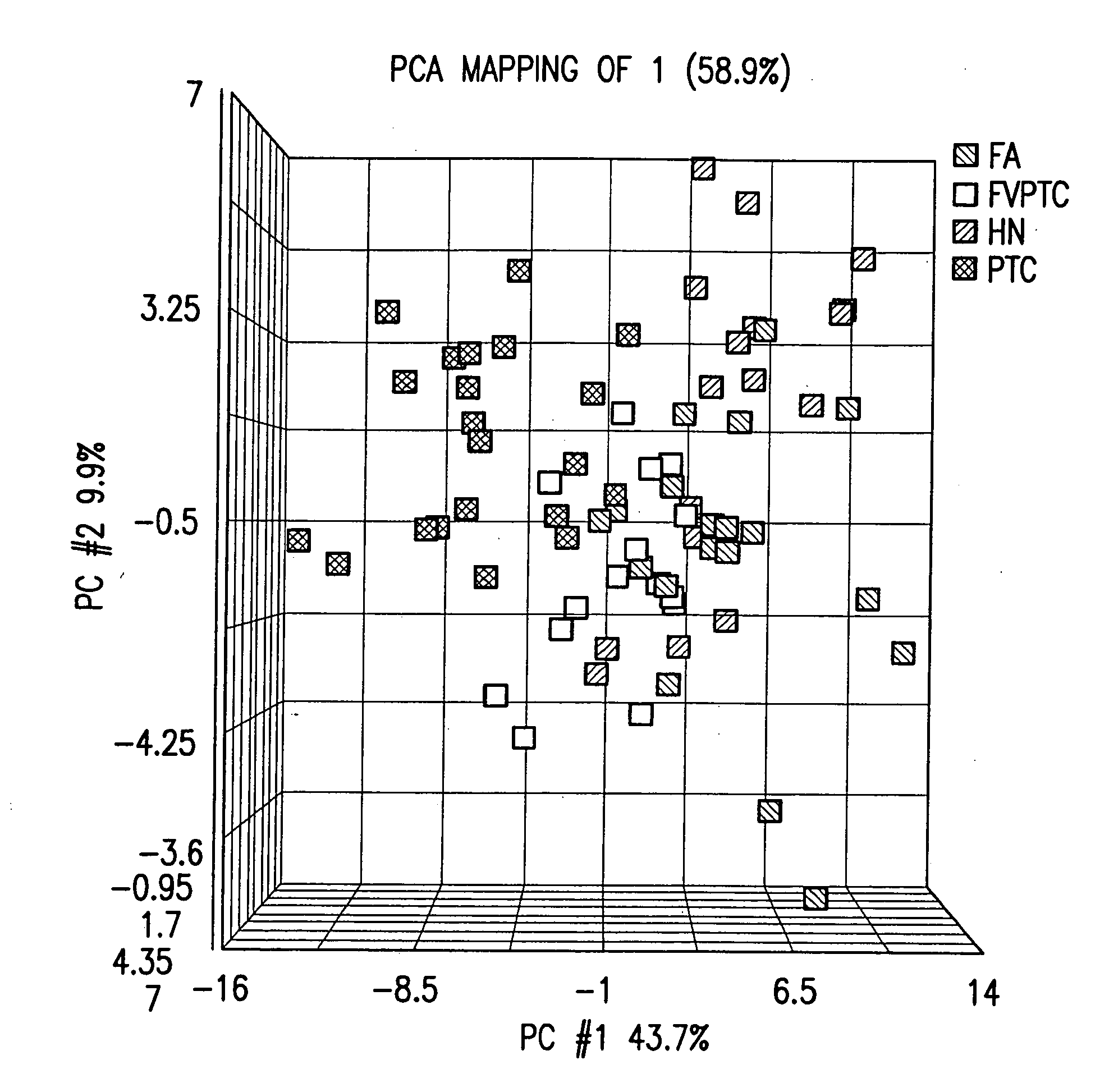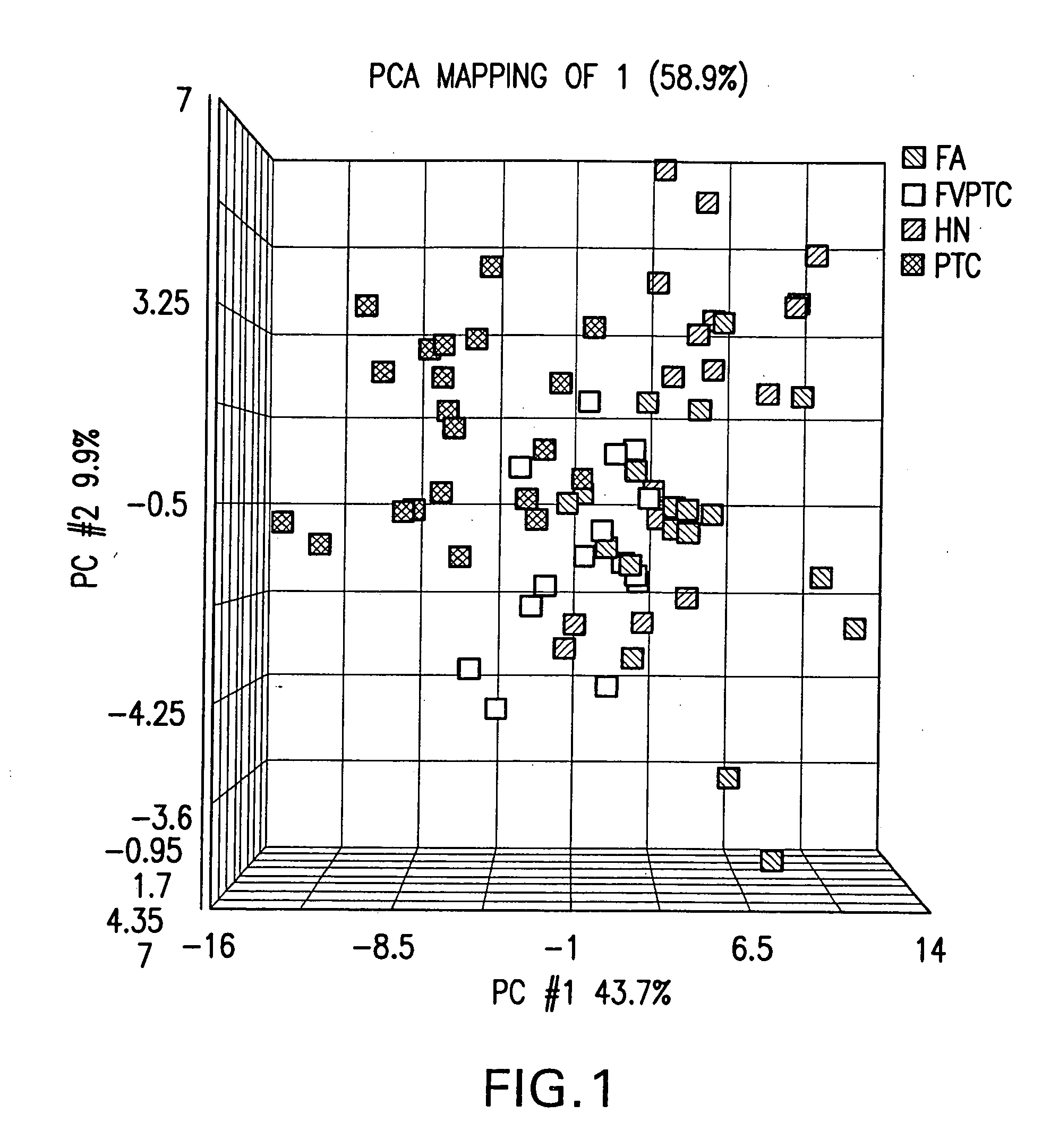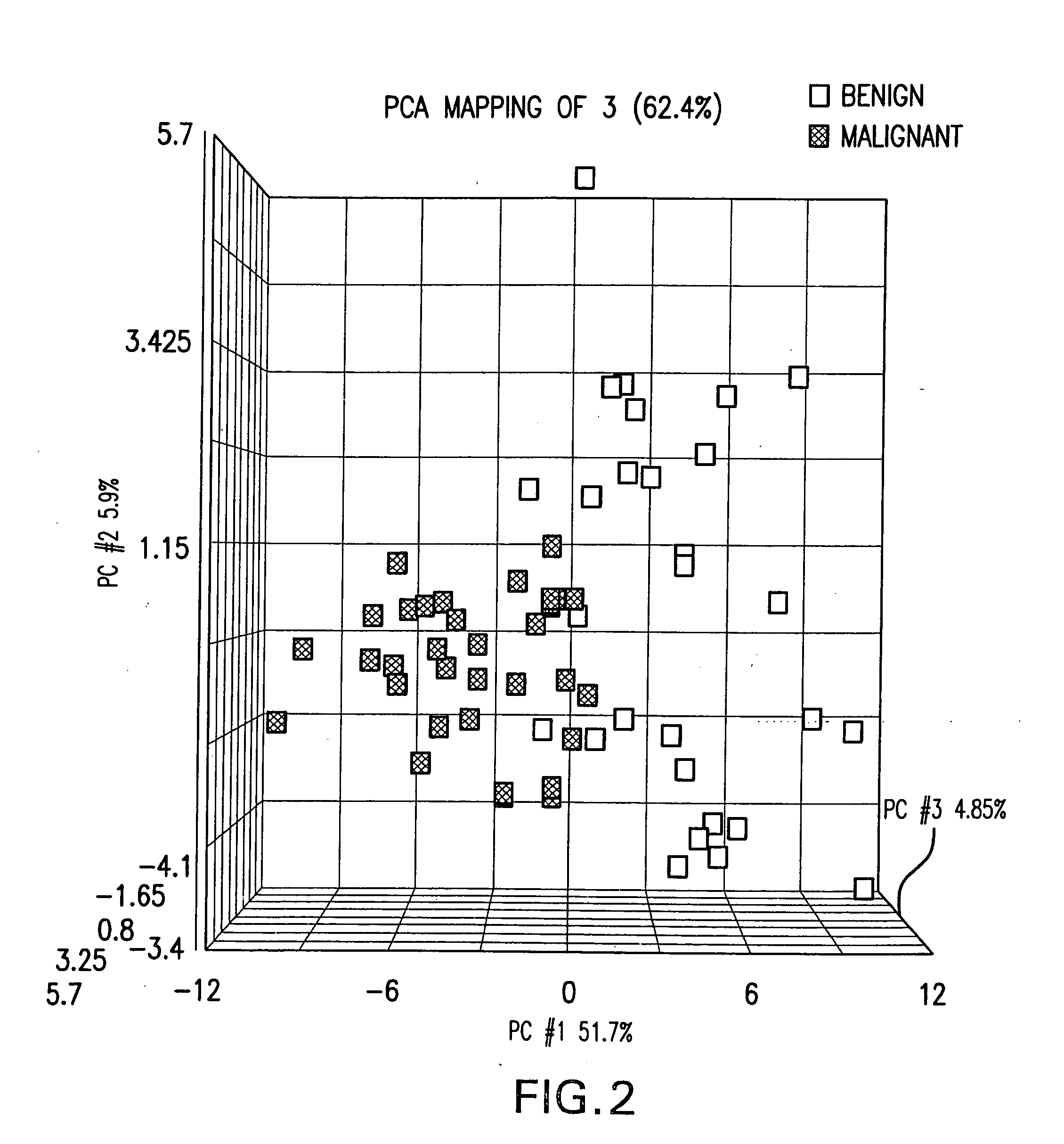Diagnostic tool for diagnosing benign versus malignant thyroid lesions
a thyroid lesions and diagnostic tool technology, applied in the field of diagnostic tools for benign versus malignant thyroid lesions, can solve the problems of indeterminate or suspicious diagnosis, requiring lifelong thyroid hormone replacement, and a large number of patients undergoing unnecessary surgical procedures, and achieve the effect of more accurate diagnostic tools
- Summary
- Abstract
- Description
- Claims
- Application Information
AI Technical Summary
Benefits of technology
Problems solved by technology
Method used
Image
Examples
example 1
DET1-DET11
[0195]In this study a gene expression approach was developed to diagnose benign vs malignant thyroid lesions in 73 patients with thyroid tumors. A 10 gene and 6 gene model were developed to be able to differentiate benign vs. malignant thyroid tumors. These results provide a molecular classification system for thyroid tumors and this in turn provides a more accurate diagnostic tool for the clinician managing patients with suspicious thyroid lesions.
Tissue Samples
[0196]Thyroid tissues collected under John Hopkins University Hospital Institutional Review Board-approved protocols were snap-frozen in liquid nitrogen and stored at −80° C. until use. The specimens were chosen based on their tumor type: papillary thyroid carcinoma (PTC n=17), follicular variant of PTC (FVPTC n=15), follicular adenoma (FA n=16) and hyperplastic nodule (HN n=15). All diagnoses were made by the Surgical Pathology Department at Johns Hopkins.
Tissue Processing and Isolation of RNA
[0197]Frozen sections...
example 2
DET4 and DET12-DET85
[0223]Although fine-needle aspiration biopsy (FNA) is the most useful diagnostic tool in evaluating a thyroid nodule, preoperative diagnosis of thyroid nodules is frequently imprecise, with up to 30% of FNA cytology samples reported as ‘suspicious’ or ‘indeterminate’. Therefore, other adjuncts, such as molecular-based diagnostic approaches are needed in the preoperative distinction of these lesions. In an attempt to identify diagnostic markers for the preoperative distinction of these lesions, microarray analysis was used to study the 8 different thyroid tumor subtypes that can present a diagnostic challenge to the clinician.
[0224]The present microaray-based analysis of 94 thyroid tumors identified 75 genes that are differentially expressed between benign and malignant tumor subtypes. Of these, 33 were over-expressed, and 42 under-expressed, in malignant compared to benign thyroid tumors. Statistical analysis of these genes, using Nearest Neighbor classification ...
PUM
 Login to View More
Login to View More Abstract
Description
Claims
Application Information
 Login to View More
Login to View More - R&D
- Intellectual Property
- Life Sciences
- Materials
- Tech Scout
- Unparalleled Data Quality
- Higher Quality Content
- 60% Fewer Hallucinations
Browse by: Latest US Patents, China's latest patents, Technical Efficacy Thesaurus, Application Domain, Technology Topic, Popular Technical Reports.
© 2025 PatSnap. All rights reserved.Legal|Privacy policy|Modern Slavery Act Transparency Statement|Sitemap|About US| Contact US: help@patsnap.com



